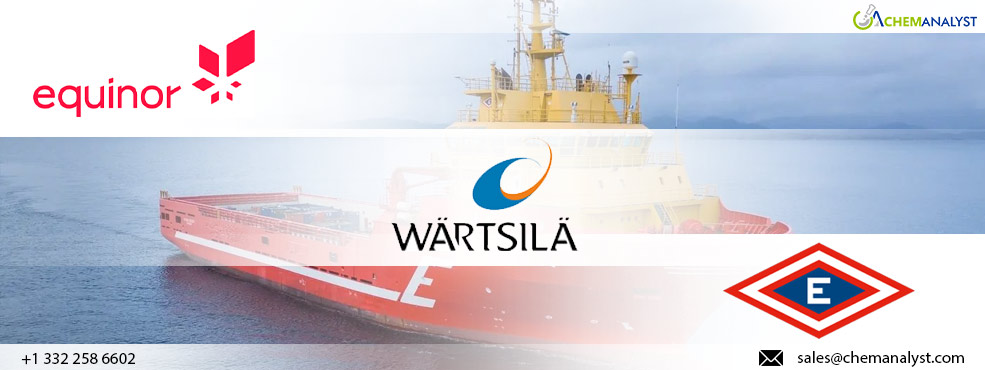Equinor, Eidesvik, and Wärtsilä Collaborate on First Ammonia-Fueled Supply Vessel
- 27-Aug-2024 12:21 PM
- Journalist: Patricia Jose Perez
Equinor has signed a contract with Eidesvik Offshore to convert the Viking Energy supply vessel to run on ammonia, aiming for low-emission operations by 2026. Viking Energy, which services Equinor’s installations on the Norwegian Continental Shelf (NCS), will become the world’s first supply vessel powered by ammonia. Wärtsilä will develop the engine for this conversion on behalf of Eidesvik Offshore. Ørjan Kvelvane, Equinor’s senior vice president for joint operations support, emphasized that the contract aligns with Equinor’s goal to reduce maritime emissions from its Norwegian operations by 50% by 2030. He noted the company's confidence in ammonia as a key fuel for its supply vessels.
The conversion, led by Eidesvik Offshore and Wärtsilä, is expected to reduce Viking Energy's emissions by at least 70%. Equinor and Eidesvik Offshore have collaborated on environmental technologies for Viking Energy for over two decades. When it was first delivered in 2003, Viking Energy was the world’s first LNG-powered supply vessel and the first to receive DNV’s “Battery Power” certification. Equinor will also provide substantial funding for the conversion, alongside a €5 million grant from the EU Horizon Europe program. The retrofit, including the new engine installation, fuel gas supply system, and exhaust after-treatment by Wärtsilä, is set for completion in 2026.
Kvelvane acknowledged that while the NCS offshore fleet is ageing and in need of upgrades, adopting new technology is costly and uncertain. However, he stressed that scaling up advanced technologies is crucial for achieving emission targets and requires collaboration with both authorities and technology suppliers. The Norwegian government plans to introduce low-emission standards for supply vessels from 2025, followed by zero-emission requirements for new vessels by 2029, though specific regulations are still being finalized.
In addition to this project, Equinor has begun exploring the market for other supply vessels capable of running on ammonia, demonstrating its commitment to incorporating low-emission technologies across its operations.
The project aims to reduce CO2 emissions by 70% or more compared to the current propulsion systems powered by LNG (natural gas) and MGO (marine gas oil), with safety being the top priority throughout its implementation. Beyond reducing emissions, the initiative will help shape regulations for ammonia as a maritime fuel and establish a value chain for ammonia bunkering. Equinor currently contracts 25-35 supply vessels on the Norwegian Continental Shelf (NCS) at any given time, with a total fleet of around 45 offshore vessels for supply, anchor handling, and emergency preparedness. Approximately 85% of the shipping companies operating for Equinor are Norwegian, employing around 1,300 Norwegian crew members.



